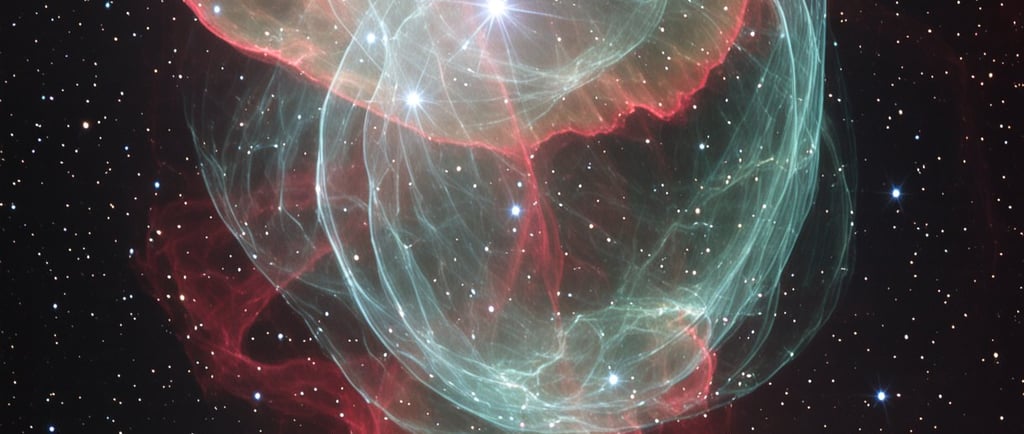Abel 35: A Nebula in Hydra


Introduction to Abel 35
Abel 35, catalogued as SH 2-313, is a remarkable nebula located within the Hydra constellation, approximately 400 light years from Earth. This stellar phenomenon captures the attention of astronomers due to its unusual characteristics and intriguing formation process. In this article, we delve into the defining features of Abel 35 and explore how it challenges conventional understanding of nebula formation.
The Fascinating Structure of Abel 35
One of the most striking features of Abel 35 is its central bow shock, which is symmetrically surrounded by emission regions. This unique structure gives the nebula an aesthetic allure that captivates both professional and amateur astronomers alike. The presence of such a bow shock suggests that the interaction between the nebula and its surroundings plays a crucial role in its overall appearance and evolution.
At the heart of Abel 35 lies a binary star system, which comprises a G-type star alongside a white dwarf. This binary configuration is pivotal to the nebula's characteristics, as it significantly influences the conditions in the surrounding interstellar medium. The hypothesis put forth by recent studies indicates that the nebula may not originate from a post-AGB star undergoing the shedding of its outer shells, as previously thought, but instead experiences photoionization resulting from the radiation emitted by the binary system.
The Implications of Abel 35's Formation
The ongoing debate about the formation of Abel 35 opens new channels for understanding the genesis of nebulae in general. Traditional theories posit that planetary nebulae are formed from the dying breaths of stars. However, Abel 35's formation appears to contradict this notion, suggesting a more complex interaction with the interstellar medium. The photoionization theories imply that stellar evolution might be influenced significantly by the environment in which stars are born.
As research deepens, the mysteries surrounding Abel 35 could yield precious insights not only into the nebula itself but also into broader cosmic phenomena. The interactions between binary star systems and nebulae are an area ripe for exploration, presenting potential revelations in astrophysics.
In conclusion, Abel 35 is not merely a visually stunning entity in the cosmos; it serves as a reminder of the complexity of stellar life cycles and the intricate relationships within our universe. The nebula's central bow shock and the dynamics of its binary star system position it as a subject of further studies, promising future discoveries that may reshape our understanding of celestial phenomena.
